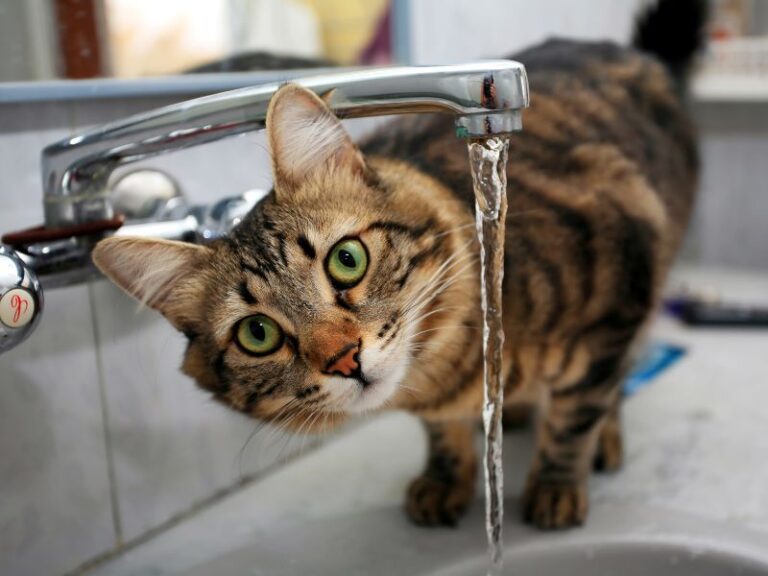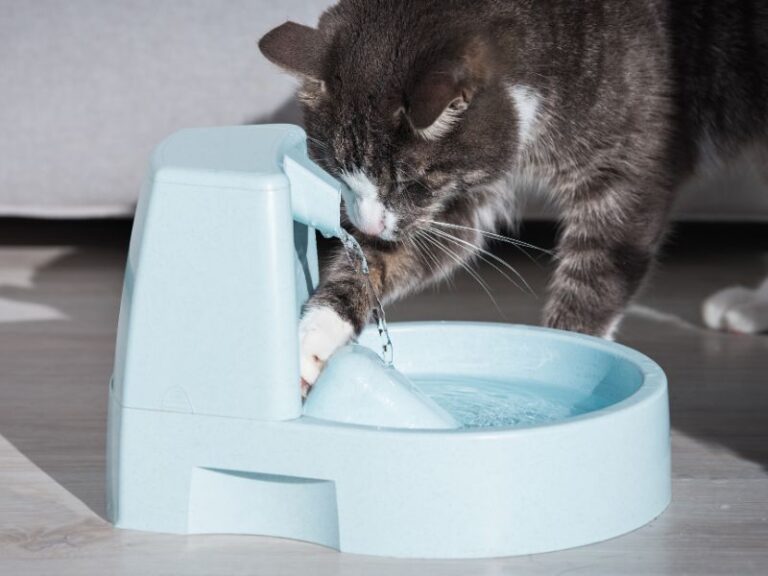Table of Contents
ToggleIn the intricate tapestry of feline health and well-being, cat nutrition emerges as a vital thread that weaves together the essence of vitality and longevity. Much like humans, cats require a well-balanced and nourishing diet to thrive. As cat parents, understanding the nuances of cat nutrition becomes an essential aspect of responsible pet ownership. In this guide, we will embark on a journey to unravel the intricacies of cat food nutrients, uncovering the core elements that make up a cat’s diet. From the cornerstone of protein to the micronutrients that fuel their every move, let’s delve into the world of cat nutrition and empower ourselves to make informed choices for our beloved feline companions.
Cats, with their mysterious allure and independent demeanor, hold a special place in our hearts. Providing them with the best possible care, including a nutritious diet, is a reflection of our love and commitment. Just as keywords like “best cat food” resonate with our quest for optimal nutrition, keywords like “cat diet” and “cat nutrition” guide us toward a deeper understanding of their needs. So, let’s embark on this enlightening journey together, exploring the key nutrients that form the foundation of a cat’s well-rounded diet.

The Core Nutrients Every Cat Needs
As we embark on this journey into the heart of cat nutrition, it’s crucial to understand that cats have distinct dietary requirements that set them apart from other animals. The essence of their well-being hinges on a carefully balanced diet that supplies the core nutrients essential for their growth, energy, and overall health. In this section, we’ll delve into two of the most critical components of a cat’s nutritional needs: protein and fats.
1. Protein: The Building Block of Feline Health
Picture protein is the architectural foundation upon which a cat’s entire being is constructed. Cats are obligate carnivores, which means that they have evolved to thrive on a diet primarily composed of animal-based proteins. In the wild, their ancestors relied on a diet rich in protein to fuel their agile movements and predatory prowess.
When seeking the “best cat food,” the presence of high-quality protein sources takes center stage. Ingredients such as chicken, turkey, fish, and lean meats provide the essential amino acids that cats require for muscle development, tissue repair, and the maintenance of a lustrous coat. Just as a jigsaw puzzle requires each piece to create the complete picture, and a cat’s body relies on a diverse array of amino acids to function optimally.

2. Fats: Fueling Energy and Vital Functions
While the word “fat” might have negative connotations in some contexts, fats play a pivotal role in a cat’s health and vitality. Fats are a concentrated source of energy that fuel a cat’s daily activities, from pouncing on imaginary prey to navigating the intricate corners of their surroundings. In addition to energy, fats also contribute to essential bodily functions, including the absorption of fat-soluble vitamins (more on that later) and the maintenance of healthy skin and coat.
Essential fatty acids, such as Omega-3 and Omega-6, are like the secret ingredients in a recipe for optimal health. These fatty acids support skin health, reduce inflammation, and promote overall well-being. A cat’s glossy coat and supple skin are not only aesthetically pleasing but also indicative of a well-balanced diet rich in these essential fats.
While protein and fats form the bedrock of a cat’s diet, it’s essential to strike the right balance between the two. Too much of one nutrient and too little of another can lead to imbalances and health issues. The “best cat food” choices are those that consider these needs, providing a harmonious blend of protein and fats to support your feline companion’s journey through life.
Navigating Cat Diet Essentials
In the realm of cat nutrition, myths and misconceptions often swirl like a gentle breeze, clouding the path to understanding a cat’s dietary needs. The concept of cat diet essentials can sometimes be perplexing, particularly when it comes to deciphering the role of carbohydrates and uncovering the importance of vitamins and minerals in a feline’s well-being. Let’s embark on a journey to demystify these essential components and shed light on their significance.

3. Carbohydrates: Unveiling the Myth
The debate surrounding carbohydrates in a cat’s diet is akin to a puzzle waiting to be solved. Cats are indeed obligate carnivores, meaning that animal-based protein forms the cornerstone of their dietary requirements. However, this does not imply a complete exclusion of carbohydrates from their diet. In the wild, a cat’s prey might contain small amounts of carbohydrates in the form of ingested plant matter.
The role of carbohydrates in cat nutrition is not to provide energy (which protein and fats excel at) but to contribute a minor source of nutrients and fiber. When selecting the “best cat food,” opt for products that include easily digestible carbohydrates, such as whole grains or vegetables. The keyword here is “digestible”; cats lack certain enzymes necessary to break down complex carbohydrates efficiently, making easily digestible sources preferable.
4. Vitamins and Minerals: Microscopic Marvels
As we delve into the world of vitamins and minerals, imagine these nutrients as the building blocks of a cat’s cellular universe. While they are required in small quantities, their absence can lead to significant health issues. Keywords like cat diet and cat nutrition come into play here, as they guide us toward understanding the role of these microscopic marvels in a cat’s overall well-being.
Vitamins and minerals support a myriad of bodily functions, from bone health and immunity to energy production and wound healing. Vitamins A, D, E, and B-complex are particularly crucial for cats. Vitamin A contributes to vision and skin health, while Vitamin D ensures proper calcium absorption and bone development. Vitamin E acts as an antioxidant, protecting cells from damage, and the B-complex vitamins assist in energy metabolism.
Minerals, too, play an indispensable role. Calcium, for instance, isn’t only associated with bone health but also contributes to muscle function and nerve transmission. Phosphorus is another mineral that supports bone health and assists in energy utilization. These nutrients work in harmony, creating a symphony of wellness that resonates within your cat’s body.
Understanding the interplay between carbohydrates, vitamins, and minerals is akin to decoding a complex puzzle, and just like a puzzle, each piece contributes to the bigger picture of a cat’s health. The “best cat food” choices are those that consider these nuanced aspects, offering a holistic blend of nutrients to cater to your cat’s individual needs.
Tailoring Nutrition to Life Stages
Just as life presents us with distinct chapters, each marked by unique challenges and milestones, a cat’s journey unfolds in different life stages, each with its own set of nutritional requirements. As responsible cat parents, it’s our privilege to ensure that our feline friends receive the “best cat food” choices tailored to their evolving needs. In this section, we’ll explore how to nourish cats through their various life stages, from the playful curiosity of kittens to the serene wisdom of senior cats.

5. Kitten Nutrition: Building Blocks for Growth
Kittens are the embodiment of boundless energy and curiosity. Their bodies are engaged in a rapid symphony of growth and development, making the nutritional choices we make for them all the more significant. The keyword “cat nutrition” takes center stage as we seek to provide the optimal foundation for a kitten’s journey.
The “best cat food” for kittens is one that supports their energy needs and fosters healthy growth. Protein, as we’ve previously discussed, plays a pivotal role here. However, the presence of another essential nutrient, DHA (docosahexaenoic acid), cannot be understated. DHA is an Omega-3 fatty acid that contributes to brain and vision development. Look for kitten formulas that include this nutrient to provide your young feline with the best possible start.

6. Adult Cat Nutrition: Sustaining Vitality
As kittens transition into adulthood, their nutritional requirements evolve. The keywords “cat diet” and “cat nutrition” continue to guide us as we make choices that sustain their vitality and well-being. Adult cats tend to be more sedentary compared to their younger counterparts, and thus, portion control becomes crucial to prevent weight issues.
Protein remains a fundamental element in adult cat nutrition, supporting muscle maintenance and overall health. Balancing calorie intake is vital, as obesity can lead to various health problems. Consider “best cat food” options that provide a mix of protein and nutrients tailored to the energy needs of adult cats. Remember, a well-nourished adult cat is more likely to lead a life full of vigor and contentment.

7. Senior Cat Nutrition: Navigating Aging Needs
Just as the autumn of life brings its own charm, senior cats deserve special attention when it comes to their nutritional needs. “Cat diet” and “cat nutrition” become compass points as we navigate the path of aging with our feline companions. Senior cats may experience changes in metabolism, dental health, and mobility.
Incorporate “best cat food” choices that address these changes. Look for formulas designed to support joint health, as well as those with controlled calorie levels to prevent weight gain. Senior cats might also benefit from diets rich in antioxidants and Omega-3 fatty acids, which aid in cognitive function and overall wellness.
As we journey through life’s stages with our cats, adapting their diets becomes an art that celebrates their uniqueness. Tailoring nutrition to their needs ensures that they can continue exploring, playing, and sharing their love well into their golden years.
Deciphering Cat Food Labels
Amidst the bustling aisles of pet stores and the array of online options, cat food labels stand as gateways to understanding the nutritional content of the products we choose. Reading between the lines of these labels requires a keen eye and a solid understanding of the keywords that define “best cat food,” “cat diet,” and “cat nutrition.” In this section, we’ll embark on a journey of label decoding, equipping you with the knowledge needed to make informed and optimal choices for your feline companion.
8. Reading Between the Lines: Decoding Labels
Cat food labels are much like cryptic codes waiting to be cracked. They hold valuable information about the composition of the food, allowing you to gauge whether it aligns with your cat’s nutritional needs. When seeking the “best cat food,” it’s essential to master the art of label reading.
a) Ingredient List: The ingredient list is where the story begins. Ingredients are typically listed in descending order of weight. Look for labels that feature high-quality protein sources like real meat or fish as the primary ingredients. Avoid products with vague terms like “meat by-products” or “animal digest.”
b) Guaranteed Analysis: This section provides insights into the nutrient content of the food. Pay attention to the levels of protein, fat, and carbohydrates. Keep in mind your cat’s specific needs; for instance, kittens and active cats may require higher protein levels.
c) Life Stage Information: Some labels indicate the life stage for which the food is suitable, such as “kitten,” “adult,” or “senior.” Choosing food that aligns with your cat’s current life stage ensures they receive the appropriate nutrients.
d) AAFCO Statement: The Association of American Feed Control Officials (AAFCO) sets standards for pet food. Look for labels that state the food meets AAFCO nutrient profiles for the relevant life stage. This indicates that the food is formulated to provide the necessary nutrients.

Final Words
Our journey through the intricate world of cat nutrition has illuminated the path to providing our feline friends with the best possible care. From the essential role of protein and fats to understanding the nuances of carbohydrates, vitamins, and minerals, we’ve unraveled the secrets to a well-balanced “cat diet.”
As we’ve journeyed through kittens’ growth, adults’ vitality, and seniors’ wisdom, we’ve tailored nutrition to each life stage, embracing the principles of “cat nutrition” and “best cat food” along the way.
Decoding cat food labels has become second nature, empowering us to make informed choices. Remember, the choices we make resonate throughout our cats’ lives, contributing to their health and happiness.
As our exploration concludes, let’s celebrate our commitment to our beloved feline companions. Through the art of cat nutrition, we’ve painted a canvas of vitality, love, and well-being that will accompany our cats on their journey through life.






